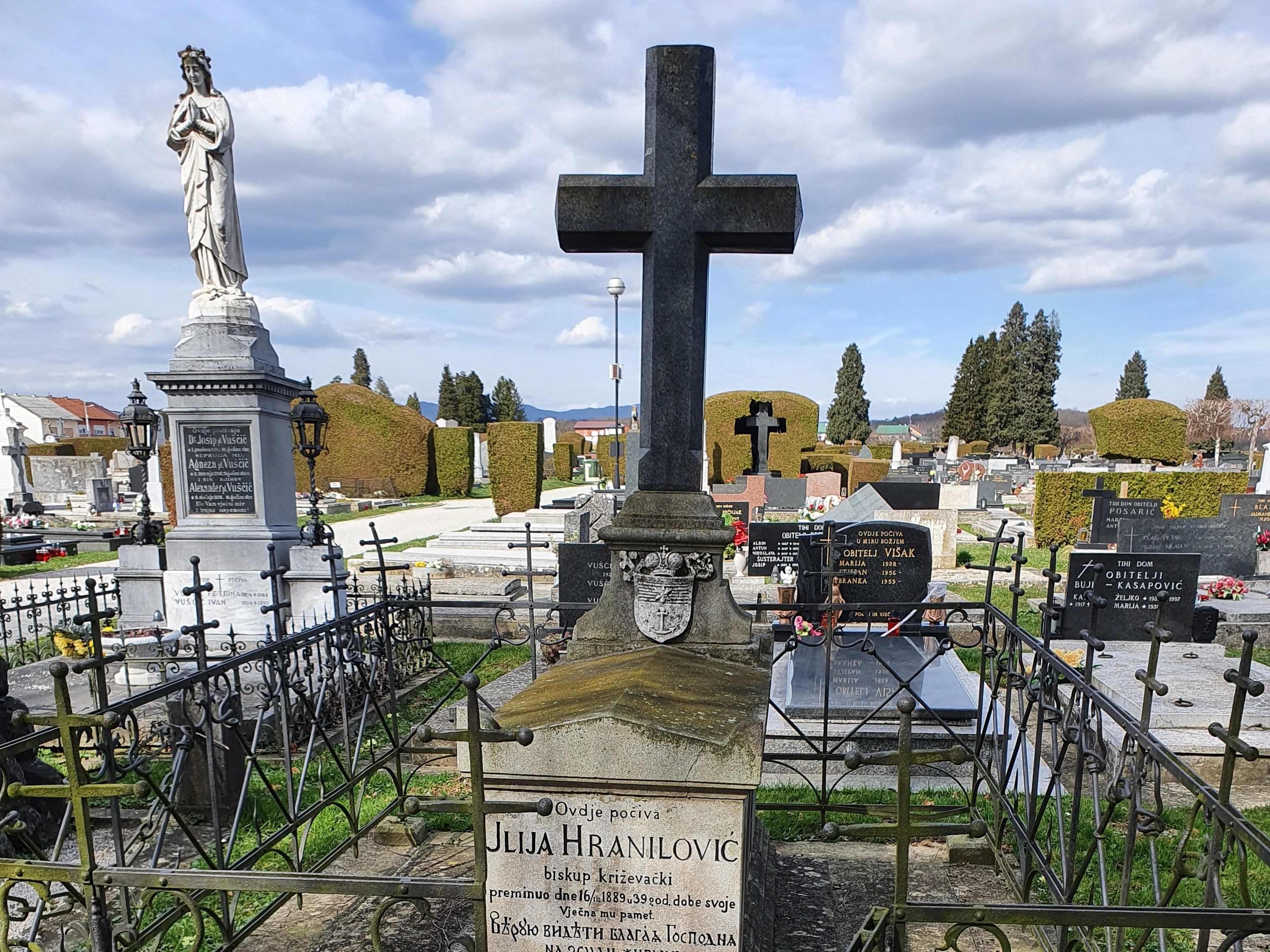
About the cemetery
The Križevci city cemetery consists of two parts. The area of 36.330 m2 relates to the “Old Cemetery” which was planned and designed by architect Stjepan Podhorsky in 1916. The area of 35.000 m2 relates to the “New Cemetery” which was planned and designed by Vesna Makovec in 2013. Architects and landscape designers are not famous people in world sense, but they are well known in the city of Križevci and Croatia.
The entrance to the cemetery is dominated by the Chapel of St. Roch and there are many graves of monuments that have been preserved in their original form. The landscape is carefully designed and regularly maintained. It includes centuries-old conifers and other plants that cover approximately 20.000 m2 of the cemetery area.
In the Jewish part of Križevci city cemetery the construction of arcades began around 1910. Since the archives of the City of Križevci, in the period from 1860 to 1945, were destroyed after World War II, it is impossible to determine with certainty the author of the project, the contractor, or the time of construction of the arcades. Nevertheless, the construction project is attributed to the famous Croatian architect Stjepan Podhorski, who at the time was working on two other important projects in Križevci: the restoration of the church of St. Cross and construction of the Croatian National House building. There are a total of eight arcades in Jewish Arcades with one tomb in each of the arcades.
Important graves and monuments
There are many important people buried at the Križevci city cemetery. Some of them are:
- Antun Nemčić (1813-1849) - Croatian writer who studied law and philosophy in Zagreb. Under the pseudonym A. N. Gostovinsky, he wrote songs, travel books, novels and comedies.
- Marcel pl. Kipach (1894-1915) - inventor, known as the “miracle child”. His work covers the fields of electronics, magnetism, acoustics, sound transmission and transformers. When he was just sixteen-year-old, he patented the original shape of a ship's compass. He also patented a vehicle lighting dynamo and the current switch on the principle of current pressure for x-rays.
- Đuro Smičiklas (1815-1881) - Bishop of Križevci. He studied theological study in Zagreb. As a priest, he served for ten years in several parishes throughout Croatia. In 1857 he received the episcopal consecration in Vienna and became the bishop of the Diocese of Križevci where he stood until his death.
- Ilija pl. Hranilović (1850-1889) - Bishop of Križevci and a very valued priest among the bishops. His legacy is, among other things, a decorated bishop’s palace in Križevci. Unfortunately, he quickly became ill and died at the age of 38.
-
Milena pl. Šugh – Štefanac (1884-1957) - opera singer who studied at the Croatian Institute in Zagreb and in Vienna. For over 10 years she was a member of the opera house in Linz. She continued her singing career in Prague till 1927, when she returned to Križevci. She was especially appreciated as a singing teacher.




Address
Ulica Ivana Lepušića 148260 Križevci
Croatia
Basic information
Year of first burial: 1898Current area: 7.13ha
Approximate number of graves: 4.600
Approximate number of burials: 10.000
